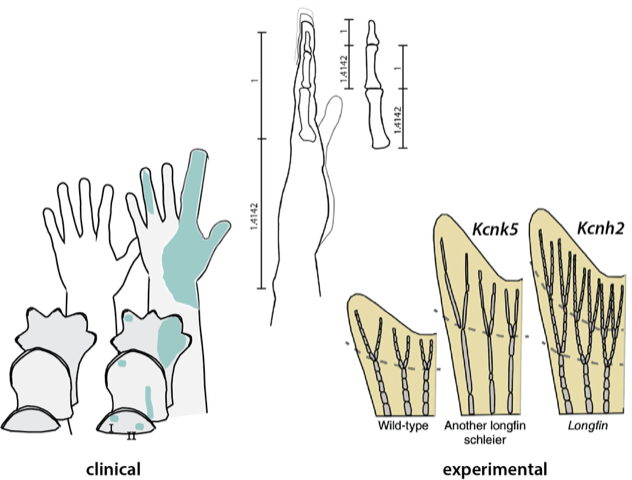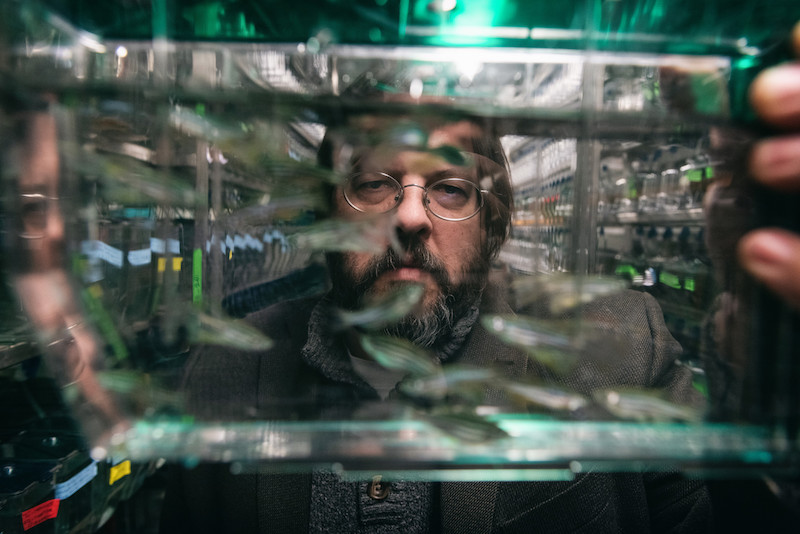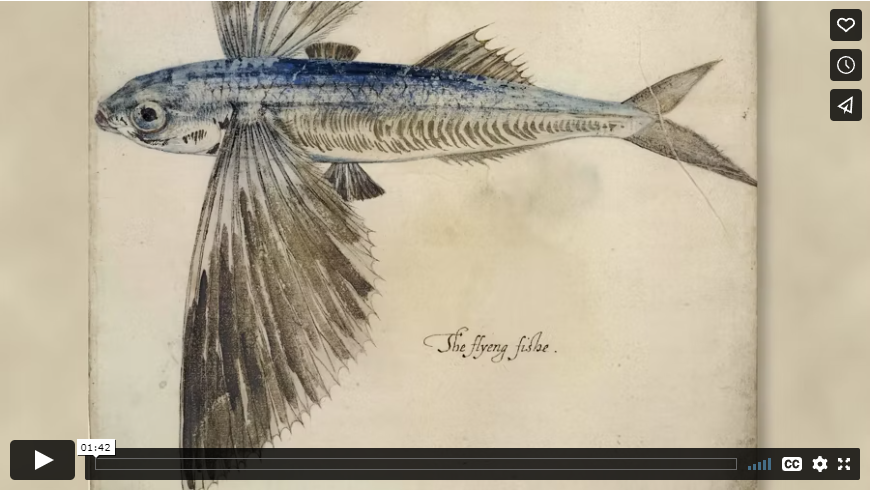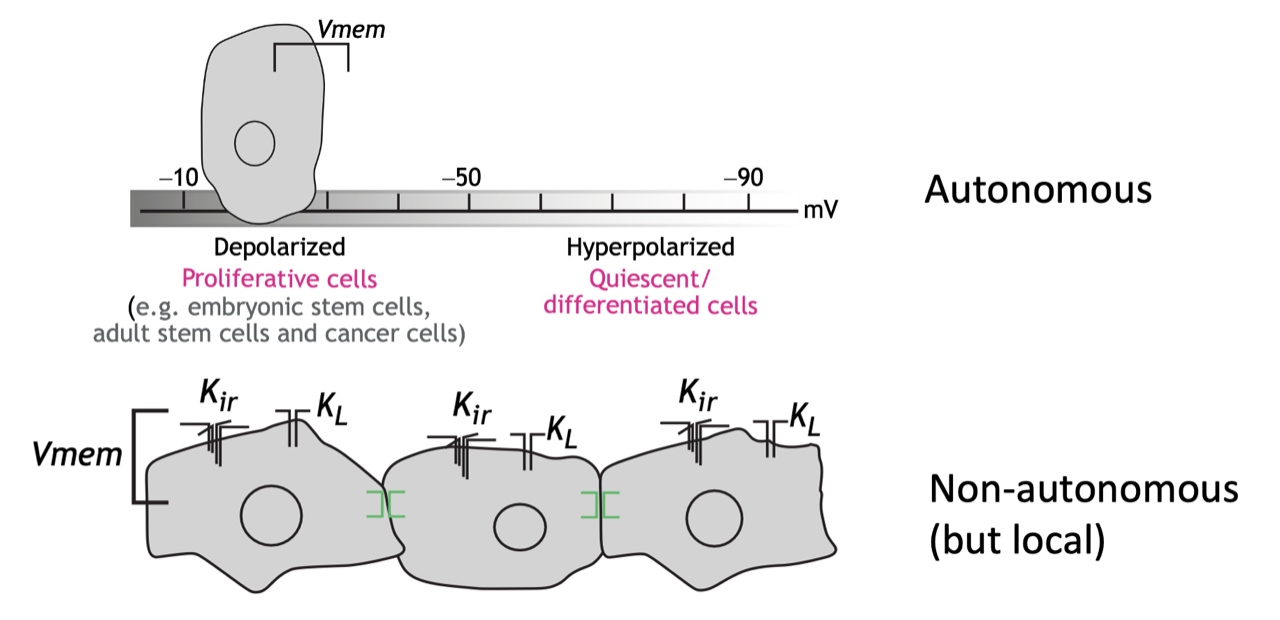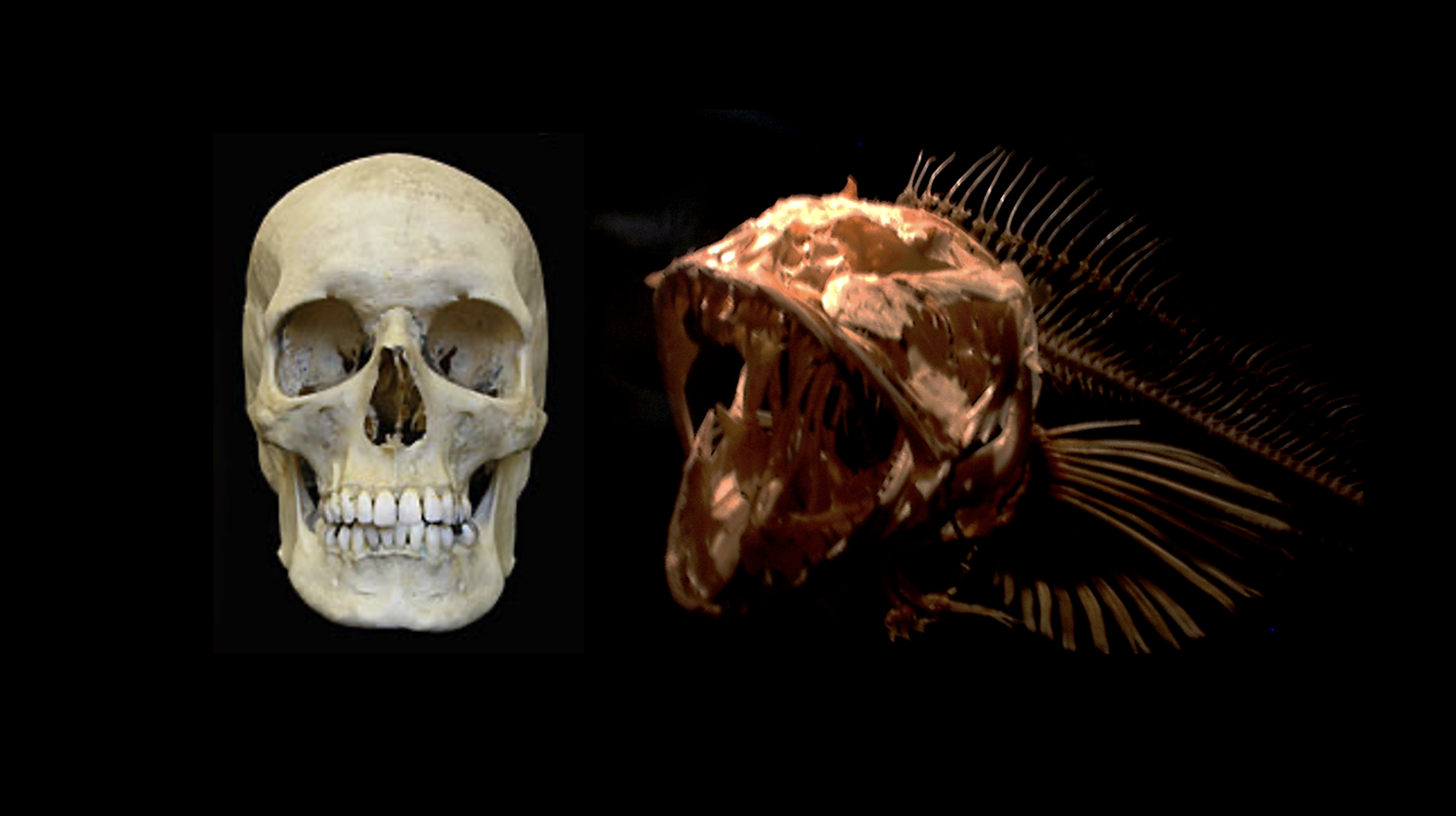Regulation of size and proportion
The developmental mechanisms that generate form and function of our bodies are complex.
For example, consider the growth of our arm – the formation of this structure requires spatial and temporal regulation of growth and differentiation leading to proportional growth of the different tissues of our bones, circulation, nervous system and muscles that, only then, function together to allow movement and grasping function. This coordinated growth requires integrated regulation of cell-specific activities as well as inductive interactions among tissues during development. While many of these processes are specified via intrinsic cues in the particular structure, there is also integration of permissive extrinsic cues such as hormones that allow for relative growth of structures with the body. How coordinated growth is regulated and timed remains enigmatic. The signaling networks underlying this regulation may provide insight into dysregulated growth such as cancer as well as mechanisms for coordinated aspects of growth such as tissue regeneration and repair. We have identified specific cases in which growth in the zebrafish fin is dysregulated, but remains co-ordinated and proportional. Integration of this work with efforts to understand mechanisms of overgrowth due to somatic mosaic disorders, such as macrodactyly, will help refine the potential mechanisms and commonalities shaping these overgrowth conditions.
Related Projects
Bioelectric signaling and development
Charge and en-large.
Craniofacial development and disease
The fundamentals of hat fitting.
Shifting size and form
Different shapes for different capes.
Publications
- Harris MP, Daane J, and Lanni J (2020) Veiled mirrors: fish fins giving insight into size regulation. Wiley Interdiscip Rev Dev Biol. doi: 10.1002/wdev.381. PMID:32323915 *corresponding author
- MacNamara C, Lanni J, Daane J, Nuzzi L, Peal D, Harris MP, Labow B (2022). Characterization of coordinated growth in macrodactyly caused by somatic mosaic activating mutations in PIK3CA. medRxiv. 2022.06.07.22275709. doi: 10.1101/2022.06.07.22275709
- Blum N, Harris MP. (2022). Localized heterochrony integrates overgrowth potential of oncogenic clones. Biorxiv https://doi.org/10.1101/2022.07.15.500211
- Lanni, J, Peal D, Ekstrom L, Chen. H, Stanclift C, Bowen M, Mercado A, Gamba G, Kahle, K, Harris MP. (2019) Integrated K+ channel and K+Cl- cotransporter function are required for the coordination of size and proportion during development. Dev Biol. Aug 28. doi: 10.1016/j.ydbio.2019.08.016. PMID:31472116
